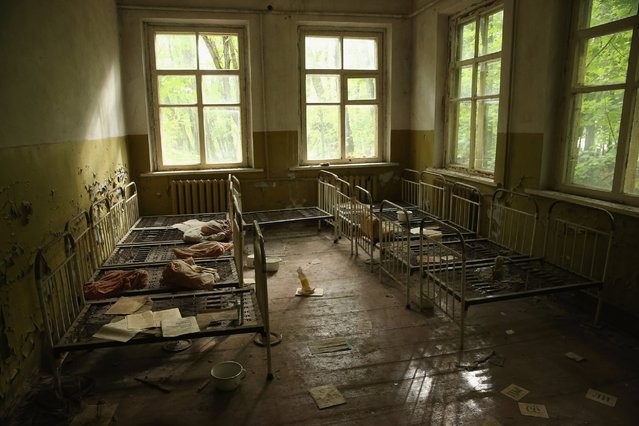
The 30th anniversary of the meltdown at the Chernobyl nuclear plant that caused large amounts of radioactive particles to be released into the air will be commemorated on April 26, 2016. Photojournalist Sean Gallup returned to the area to document the lasting effects of the world's worst nuclear power plant accident. Pictured, children's beds are seen in an abandoned kindergarten in Kopachi village located inside the Chernobyl exclusion zone, Sept. 29, 2015, near Chernobyl, Ukraine. (Photo by Sean Gallup/Getty Images)
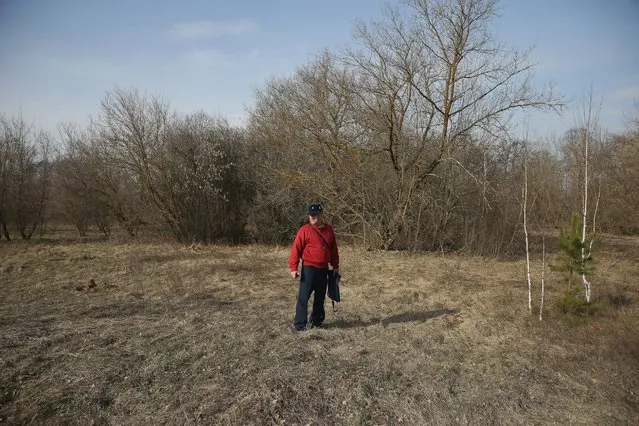
Vladimir Kovzelyev, 64, stands at the site of the house where he once lived with his wife and daughter, April 6, 2016, in Besyadz, Belarus. Following the nuclear meltdown at the Chernobyl nuclear power plant, Besyadz was contaminated with radioactive fallout. Authorities concentrated their initial evacuation efforts on communities closer to Chernobyl, but by 1991 determined Besyadz was not safe, evacuated its residents, and destroyed nearly all the structures. Today the site remains an exclusion zone and off-limits to visitors. (Photo by Sean Gallup/Getty Images)
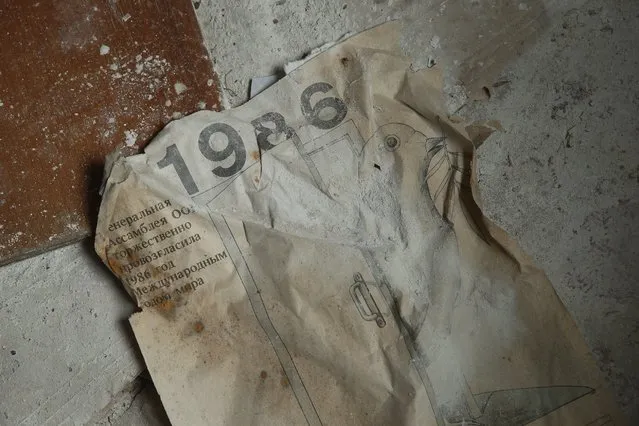
A calendar from the year 1986 lies on the floor of a former hospital, April 9, 2016, in Pripyat, Ukraine. Pripyat was built in the 1970s as a model Soviet city to house the workers and families of the Chernobyl nuclear power plant. Authorities evacuated approximately 43,000 people from Pripyat in the days following the disaster and the city has remained abandoned ever since. (Photo by Sean Gallup/Getty Images)
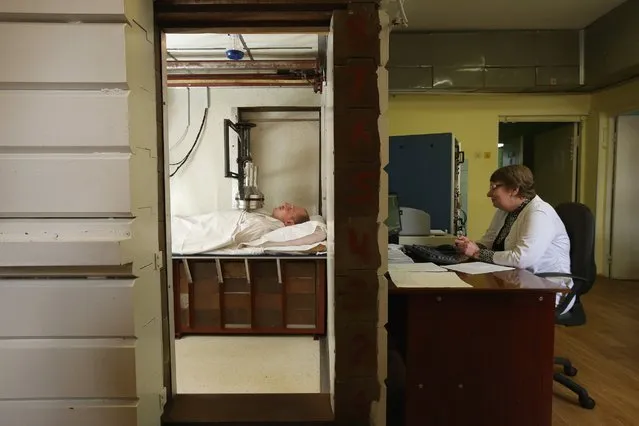
Artur Vlasenko, 27, who is applying for a job at the Chernobyl nuclear power plant, prepares to undergo screening for radiation levels, April 7, 2016, in Kiev, Ukraine. The National Research Center for Radiation Medicine is a hospital and research institute that was established after the 1986 Chernobyl nuclear accident. (Photo by Sean Gallup/Getty Images)
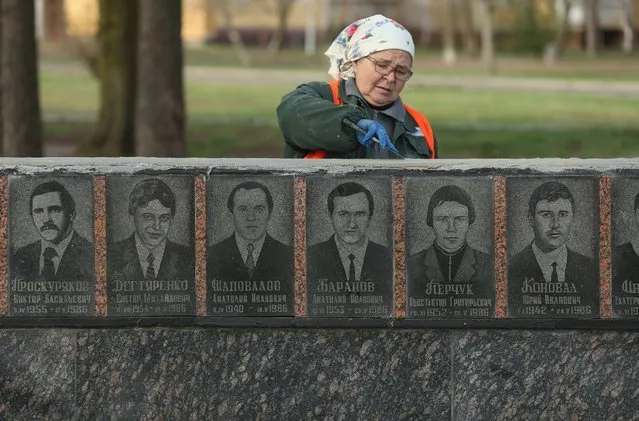
A worker renovates a memorial to technicians who died during and in the immediate aftermath of the Chernobyl nuclear accident, April 8, 2016, in Slavutych, Ukraine. (Photo by Sean Gallup/Getty Images)
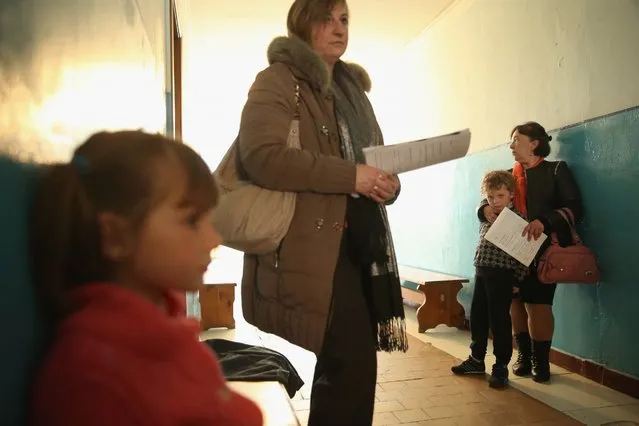
Children wait to be tested for the presence of certain radio-isotopes, including caesium 137, in their bodies as part of ongoing screening of local children at the polyclinic, April 1, 2016, in Ivankiv, Ukraine. Ivankiv district, an area inhabited by approximately 30,000 people, lies just south of the Chernobyl Exclusion Zone. (Photo by Sean Gallup/Getty Images)
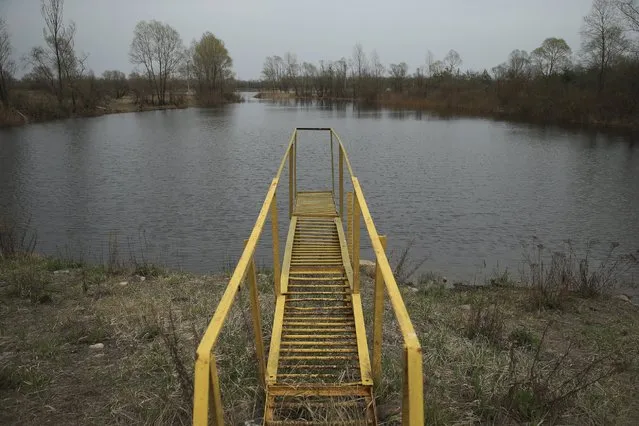
A metal landing leads out to what was once a port for boats on the Pripyat River, April 9, 2016, in Pripyat, Ukraine. (Photo by Sean Gallup/Getty Images)
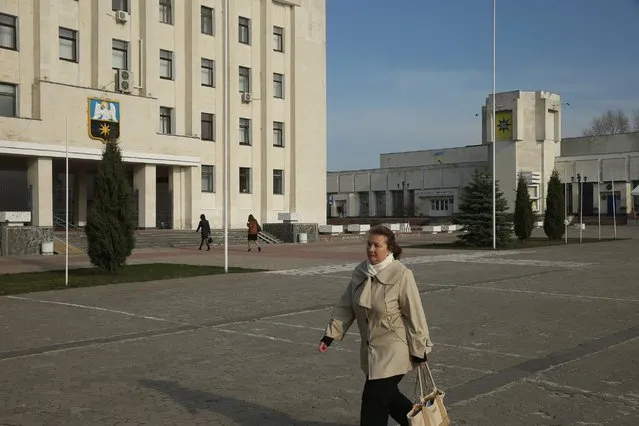
A woman walks past an administrative building, April 8, 2016, in Slavutych, Ukraine. Slavutych is a new town built in the years after the Chernobyl accident to replace Pripyat, the town that had previously housed Chernobyl workers and their families and was abandoned due to radioactive contamination. (Photo by Sean Gallup/Getty Images)
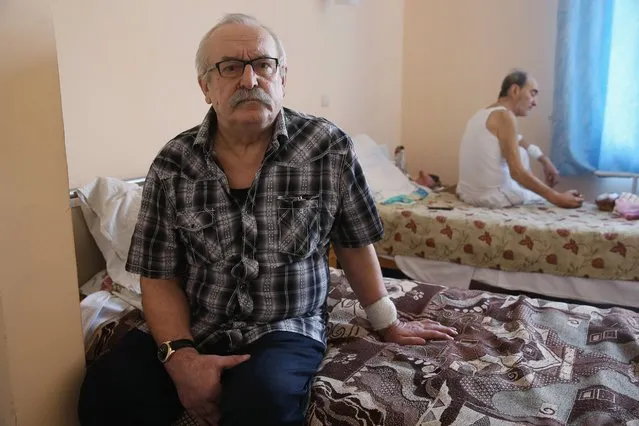
Volodimir Goluga, 61, who suffers from a bone marrow condition as well as cardiac issues, sits on his hospital bed in the hematological ward at the National Research Center for Radiation Medicine, April 7, 2016 in Kiev, Ukraine. Volodimir was a soldier in the Soviet Army and spent six months participating in cleanup and decontamination efforts at Chernobyl following the 1986 meltdown. Many of those who participated in clean-up and decontamination at Chernobyl, who call themselves “liquidators”, were exposed to high doses of radiation. (Photo by Sean Gallup/Getty Images)
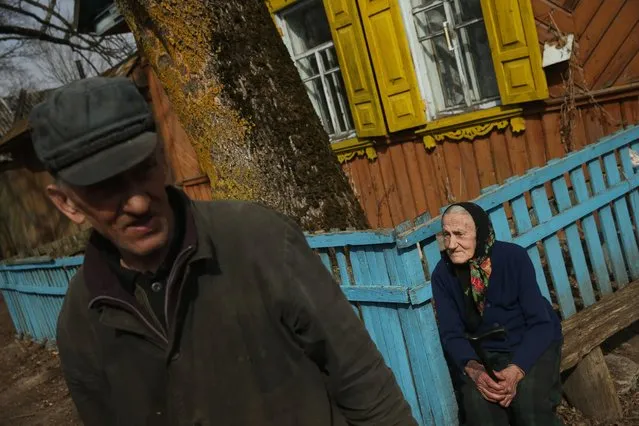
Yelyena Muzichenka, 86, and Nilokai Gardunov, 62, are seen outside Yelyena's house, April 6, 2016, in Bartolomeyevka, Belarus. Today, only four residents live in Bartolomeyevka, a former village located in southeastern Belarus that was contaminated after the explosion at the Chernobyl nuclear power plant. (Photo by Sean Gallup/Getty Images)
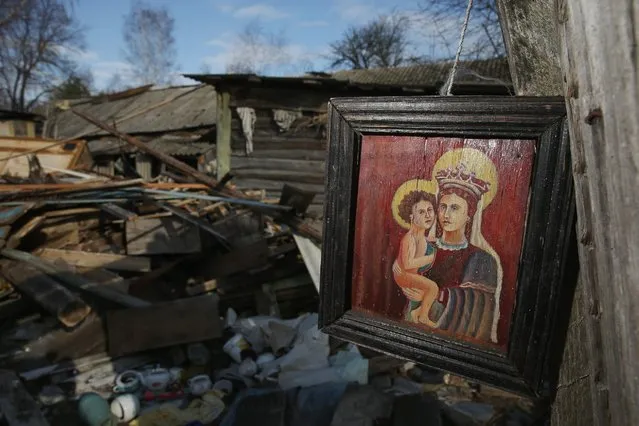
A painting is seen among the ruins of one of the few remaining structures at the site of the destroyed village of Navilovka, April 4, 2016, near Chachersk, Belarus. Navilovka was among hundreds of villages in Belarus demolished by authorities following radiation contamination from the Chernobyl nuclear disaster in 1986. (Photo by Sean Gallup/Getty Images)
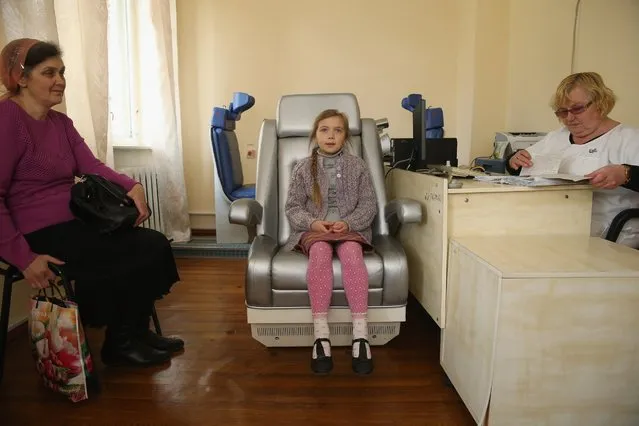
Oksana Kurkach, 8, sits in a chair lined with instruments that will analyze her for radiation emitted from caesium-137, at the National Research Center for Radiation Medicine, April 7, 2016, in Kiev, Ukraine. Thousands of people in Ukraine live in regions still contaminated to varying degrees with radiation from the 1986 meltdown of reactor four at the Chernobyl nuclear power plant. (Photo by Sean Gallup/Getty Images)
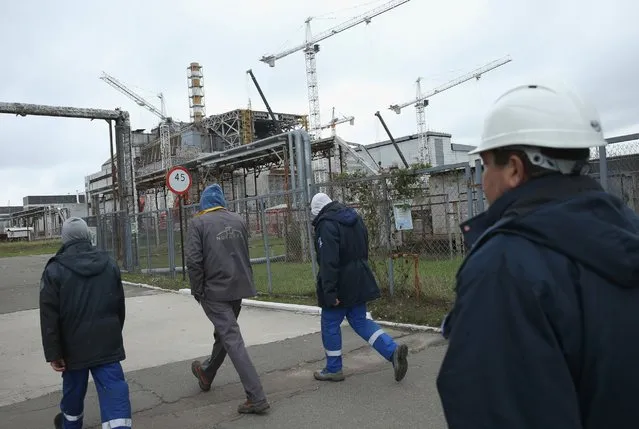
Workers walk past the remains of reactor number four at the former Chernobyl nuclear power plant on September 29, 2015, near Chornobyl, Ukraine. (Photo by Sean Gallup/Getty Images)
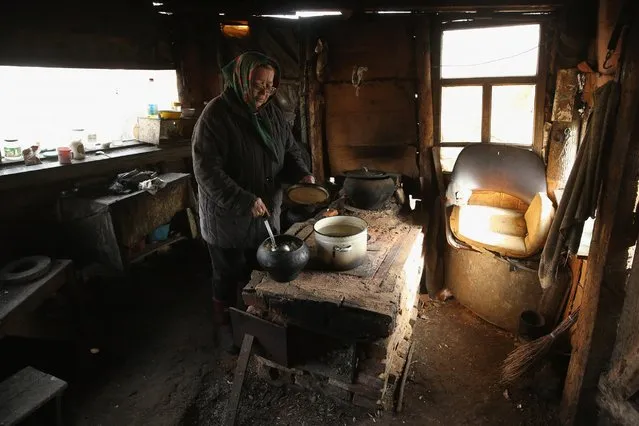
Lyuba Galushka, 70, stirs soup in her home, April 6, 2016, in Bartolomeyevka, Belarus. Galushka is one of four residents still living in Bartolomeyevka after authorities declared the village contaminated by the accident at the Chernobyl power plant. (Photo by Sean Gallup/Getty Images)
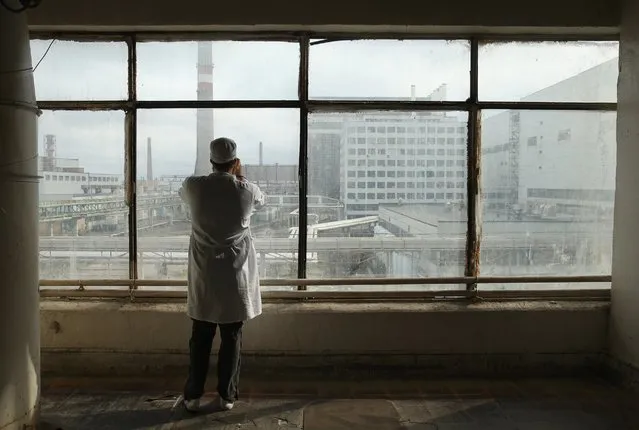
A visitor touring the former Chernobyl nuclear power plant takes a photo through a window looking towards facilities that house reactors one and two, September 29, 2015, near Chernobyl, Ukraine. Today, tour operators bring tourists in small groups to explore certain portions of the exclusion zone. (Photo by Sean Gallup/Getty Images)
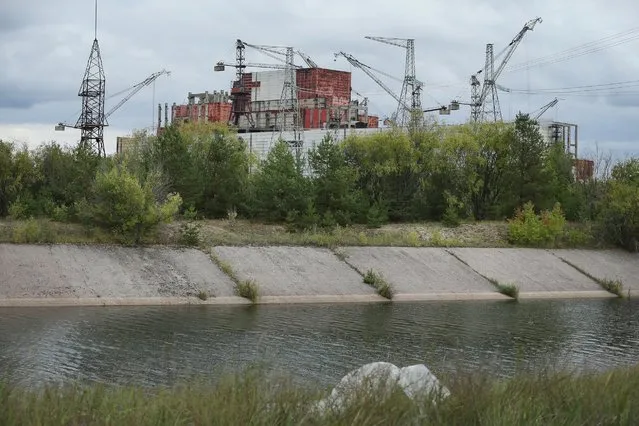
Cranes stand in the same position as they did nearly 30 years ago over the abandoned construction site of reactors five and six of the Chernobyl nuclear power plant, September 29, 2015, near Chernobyl, Ukraine. (Photo by Sean Gallup/Getty Images)
14 Apr 2016 12:01:00,
post received
0 comments
